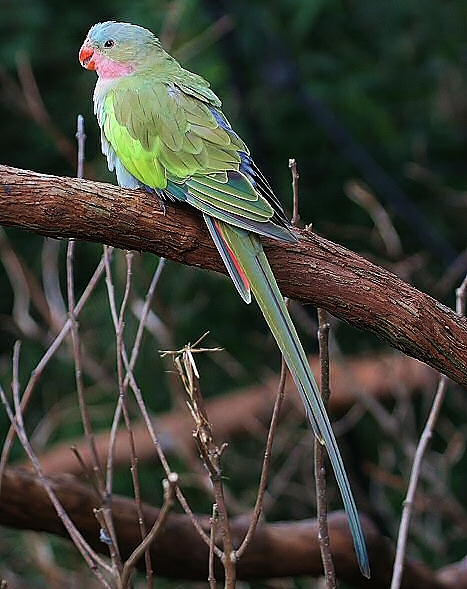 |
| Photo by William Hull (Mango Verde) |
Common name:
princess parrot (en); piriquito-princesa (pt); perruche d’Alexandra (fr); perico princesa (es); Alexandrasittich (de)
Taxonomy:
Order Psittaciformes
Family Psittacidae
Range:
This species is endemic to Australia, being found in the central and western arid zones of the country, in inland areas of Western Australia, Northern Territory and South Australia.
Size:
These birds are 40-45 cm long and weigh 90-120 g.
Habitat:
The princess parrot is found in sandy deserts, dry grasslands, dry scrublands and open savanna woodlands consisting of scattered stands of Eucalyptus, Casuarina or Allocasuarina trees.
Diet:
They feed on the seeds, flowers, nectar and leaves of various plants.
Breeding:
Princess parrots mainly breed in September-January, but may breed at any time of the year following rainfall. The nest is a pile of decaying wood dust, placed in a hollow or hole in an Eucalyptus tree, often close to watercourses. There the female lays 3-6 white eggs, which she incubates alone for 20-23 days. The chicks are mainly fed by the female, sometimes with some help by the male, fledging 5-6 weeks after hatching. After fledging they will receive food from the male for another 3-5 weeks.
Conservation:
IUCN status – NT (Near-Threatened)
This species has a very large breeding range, but the global population is estimated at just 5.000 individuals. They nomadic or irruptive movements makes it difficult to access any population trends, but their breeding range seems to be contracting. The main threats affecting this species are habitat changes caused by increased water availability and the introduction of herbivores such as sheep, rabbits and camels. Changes in fire regimes and the introduction of predators such as cats and red foxes Vulpes vulpes are additional threats.







